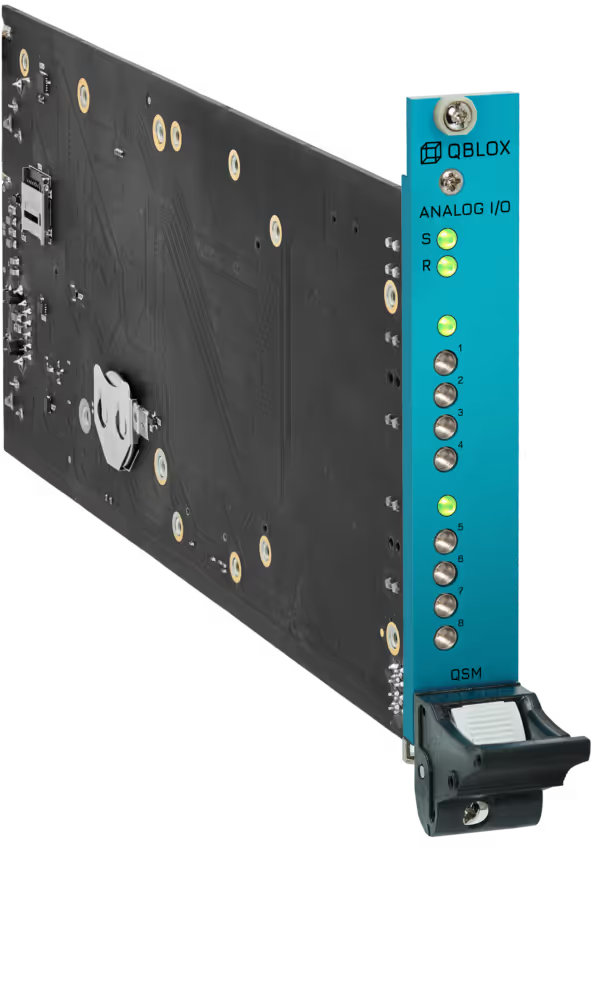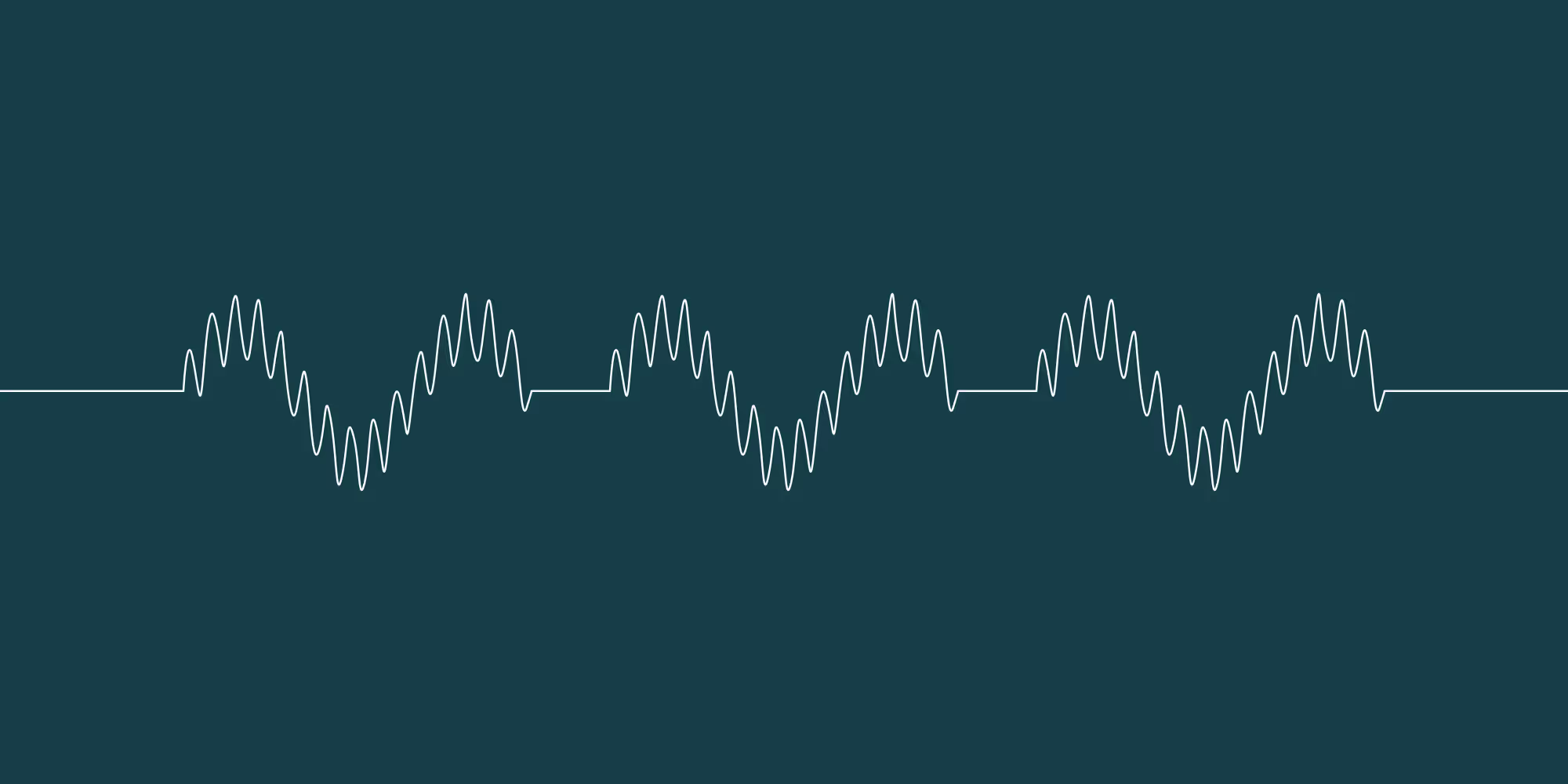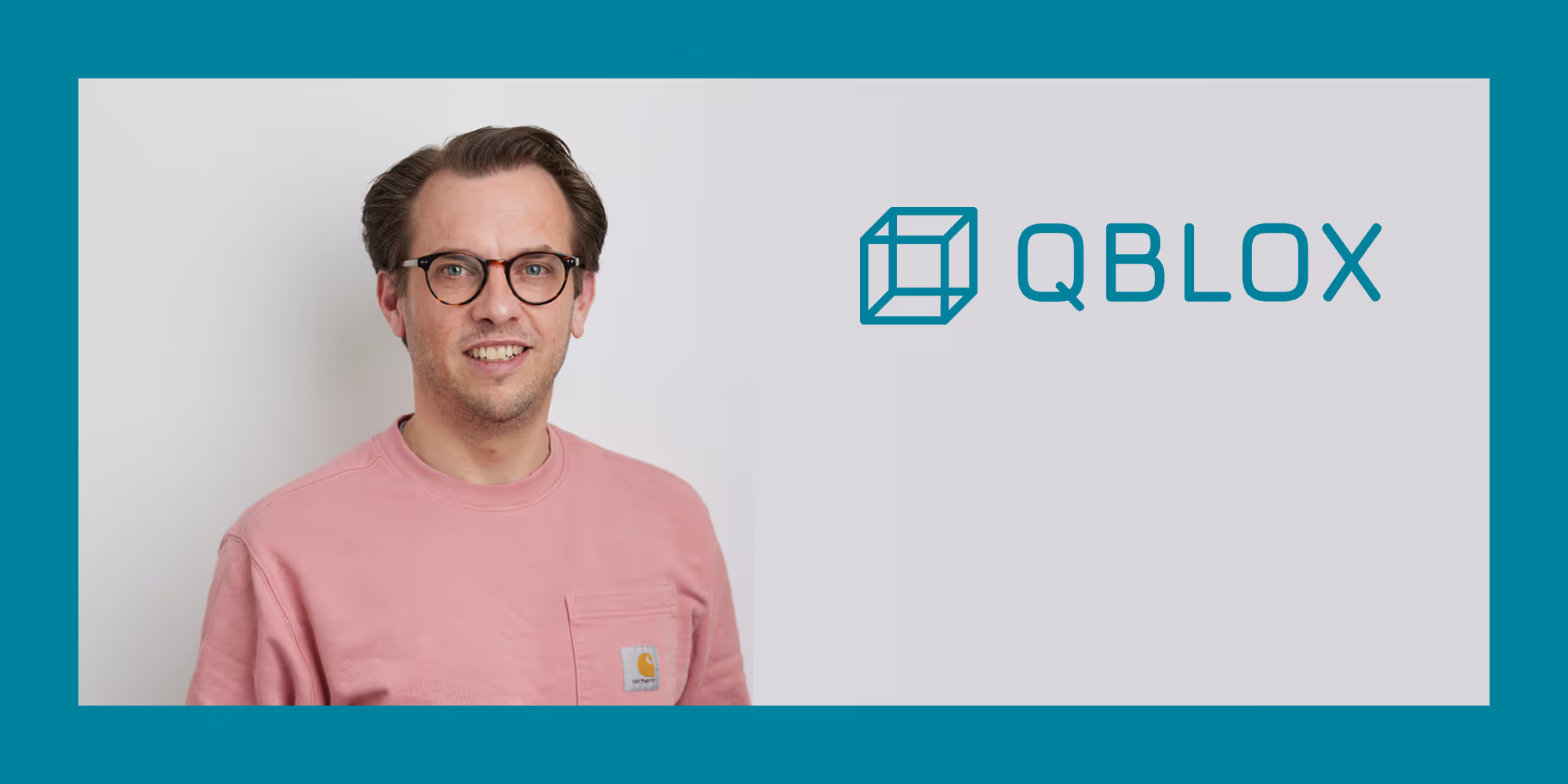The APS 2025 Global Physics Summit in Anaheim was an electrifying week from March 16-21. We also appreciated everyone who visited our booth or attended our scientific sessions. The Summit was an opportunity to showcase our latest quantum technology advancements, including a new DC solution. The Qblox booth became a hub of activity, with live demonstrations showcasing our control stack setup for superconducting, spin, and optically addressable qubits. We weren't just highlighting individual components; we were emphasizing the integrated solutions we're building through strategic collaborations with partners like TreQ, Bluefors, Rigetti, and QuantrolOx. And, because we believe that innovation thrives in a vibrant environment, we made sure to have fun, too.
Qblox’s DC solution
One of our major highlights was the unveiling of our DC solution: the Quantum Source and Measurement (QSM) module and the DC Cluster. Alongside our familiar blue Qblox Clusters, visitors spotted a new white Qblox DC Cluster. Supporting up to 20 QSM modules, it represented a scalable and high-performance system. The DC Cluster's modular design seamlessly integrates with our Qubit Control Module (QCM) and Qubit Readout Module (QRM) baseband modules within a single 19” mainframe, creating an integrated system that provides all essential functions for DC transport experiments across various device concepts.
The QSM captured the attention due to its unique dual functionality for sourcing and measurement, making it perfect for transport experiments and qubit applications. We were thrilled to demonstrate its 8 re-configurable DC channels, impressive 28-bit resolution over a +/- 10V voltage sourcing range, and precise measurement capabilities.
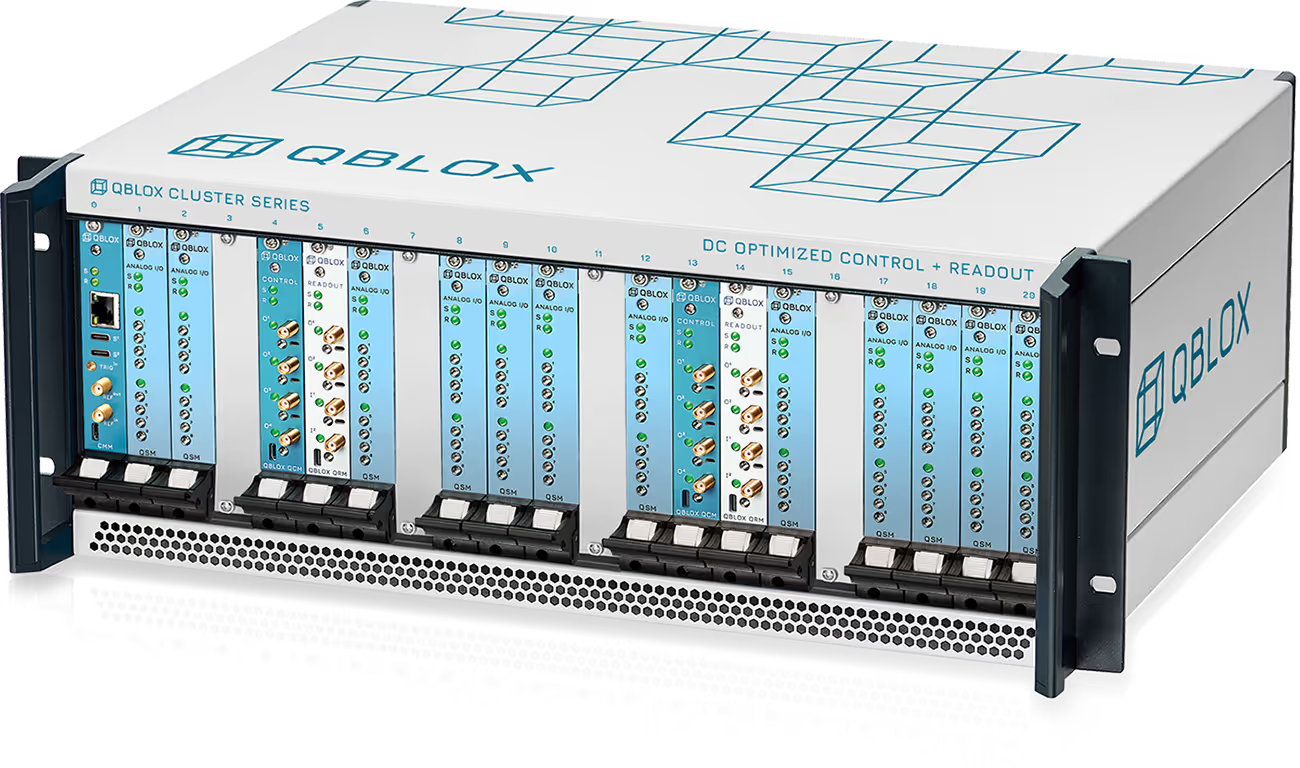
.avif)
To learn more about the QSM and DC Cluster, you can download the product sheet here.
Quantum insights at Booth #139
APS visitors witnessed live demonstrations across various qubit platforms, showcasing setups tailored for specific research focuses. This provided them with a firsthand opportunity to understand how Qblox can meet their quantum research needs, thanks to the modularity, scalability, and ease of use of Qblox control stacks.
Control stack solution for superconducting qubits
Many APS visitors were particularly interested in exploring advanced control solutions for superconducting qubits. Willemijn Uilhoorn, our Quantum Application Scientist shared valuable insights on this topic during her talk about the Qubit Control Module (QCM). Visitors learned how the QCM maintains low drift and noise by utilizing digital filters to compensate for distortions, resulting in repeatable flux pulses and significantly improved two-qubit gate fidelity, with pulse amplitude errors reduced to less than 0.1%.
Rohit Navarathna, our Senior Quantum Application Engineer, also presented some exciting work. He showcased two methods using the Qblox Cluster: active reset with two thresholds and feedback-driven measurements. These techniques improved qubit reset fidelity, reduced experiment time, and lowered overhead, making the entire process more reliable and efficient. For those curious to learn even more about active qubit reset, we have a dedicated blog post on the subject.
Blog Speeding up your experiment with active reset of your qubit
A superconducting qubit Surface-17 setup live demonstration tied it all together: from how flux-tunable transmons can be controlled at a fixed frequency, along with accelerating qubit initialization with active reset, to enhancing two-qubit gates by eliminating the need for a bias tee. Furthermore, visitors witnessed how Quantify software enabled faster results and how SYNQ synchronization was paving the way for those next-gen quantum processors. It was a real showstopper, and everyone had the opportunity to see firsthand what they can achieve with our technology.
.gif)
Control stack solution for spin qubits
Spin qubits were another area we were excited to feature. Our Quantum Application Scientist, Yiğitcan Uzun, delivered a captivating talk on "Spin shuttling with gapless scheduling of real-time parametrized pulses." He presented Qblox's unique approach to “gapless’’ shuttling, which handles both Bucket-brigade and Conveyor mode. This demonstration highlighted how the Qblox setup can update pulse frequencies on the fly, making the process highly efficient.
If you're keen to dive deeper into spin shuttling, we've got a detailed blog post for you.
Blog Can we ensure efficient quantum information transfer in large-scale spin-based QPUs?
A live demo illustrated the capabilities of the Qblox control stack solution for spin qubits. The demonstrations included device characterization using RF reflectometry, charge stability diagrams, and Rabi experiments. Visitors also observed Conveyor mode spin-shuttling with synchronized pulses from the Qubit Control Module (QCM) and real-time programming with Quantify software. The setup facilitated experiments with 2-qubit gates and Pauli-Spin Blockade (PSB) readout, while also demonstrating signal integrity and crosstalk compensation. The seamless integration of the all-in-one control stack was on display, combining qubit control and readout with absolute synchronization and a wide frequency range, from DC up to 18.5 GHz.
Control stack solution for optically addressable qubits
At the APS 2025 Global Physics Summit, we also focused on optically addressable qubits. Early in the week, our Quantum Application Scientist, Sayali Shevate, gave a talk discussing how the Qubit Timetag Module (QTM) addresses the challenge of measuring photon time correlations for quantum networking and distributed computing. She presented a collaboration with TNO, showcasing a long-distance photon-coincidence experiment where the QTM's windowed acquisition feature eliminated dark counts and produced a clear correlation peak over a 220-meter travel path, including 150 meters of free space travel.
In the live demo at our booth, visitors observed how the Qblox control stack enables researchers to work with optically addressable qubits, specifically color centers. They witnessed precise measurements using integrated time tagging with the QTM for g(2) photon autocorrelation to detect single quantum emitters. The demonstration included characterizing NV center qubits via Pulsed Optically Detected Magnetic Resonance (Pulsed ODMR) with the RF Qubit Control Module (QCM-RF II). Visitors also saw techniques to improve qubit stability with dynamical decoupling, advanced control with photon-count-based feedback, and the implementation of Bell state measurements. This highlighted how Qblox technology can empower research in optically addressable qubits, including entanglement verification using the QTM.
Curious about how we use Bell State measurements (BSM) and precise time tagging to achieve entanglement between two color centers, and how our Qblox Qubit Time Tagging Module (QTM) confirms it all? We've got a blog post that breaks it down for you! It explains why this entanglement verification is so important for building the quantum future – connecting quantum computers and even creating a quantum internet.
Blog: From color centers to quantum networks
For an even deeper dive into the crucial role of time tagging, especially for optically addressable qubits, download our latest whitepaper and uncover their full potential.
.gif)
Spot the Blue: Qblox collaborations
You probably noticed Qblox Clusters popping up at a few other interesting booths during the APS Global Physics Summit. It's true, our cluster is really friendly and integrates seamlessly with other technologies. We truly believe collaborations are key to unlocking the full potential of quantum technology.
Open-architecture innovation lab Compass SG25B
The Compass SG25B, a turn-key, open-architecture quantum lab, was one of the summit's highlights. Developed by TreQ, Bluefors, Qblox, QuantrolOx, and Rigetti, it offers a complete solution for quantum research. Each partner brings unique expertise, from Bluefors’s Ultra-Compact LD dilution refrigerator, Qblox’s modular control stacks, and QuantrolOx’s Quantum EDGE to Rigetti’s Novera™ QPU.
For more details, please reach out to us through the TreQ website.
Successful integration and testing performed with Riggeti and QuantrolOx
We’re excited to share that our recent collaboration with Rigetti and QuantrolOx has yielded fantastic results. We integrated Rigetti's Novera QPU with our Qblox Cluster and QuantrolOx's Quantum EDGE software. In under a day, we went from an uncharacterized chip to measuring two-qubit gates. The high-quality signals and high fidelity demonstrated the reliability of our combined technologies. If you want all the details, you can read more about it on Rigetti's blog.
Something together with QuantrolOx
There was something quite interesting happening from the QuantrolOx side. They were demonstrating how their Quantum EDGE software accelerated QPU tuning from days to minutes, thanks to its seamless integration with our Qblox Cluster. Dominic Lennon, their Director of Product, was there to show everyone how this powerful combination can speed up quantum research.
Bluefors - Qblox collaboration
Our partnership with Bluefors, a leader in cryogenic measurement systems, was another highlight. At the APS Global Physics Summit 2025, we showcased how our Qblox control stack could work seamlessly with Bluefors' cryogenic systems to address the specific needs of customers working with spin qubit systems, with the ultimate aim of realizing industrial-scale quantum computers. Read more here.
Who said we can’t have fun?
Now, who said quantum conferences had to be all serious business? We certainly didn't think so, and we made sure to bring some fun to the APS Global Physics Summit! First up, we had QPong at our Booth #139. It wasn't just your average pong game, oh no. This was QPong, a reimagined version that ran on our Qblox hardware and was visualized in X-Y mode on an oscilloscope. It was pretty cool to see it in action, powered by our Q1ASM assembly layer access. It highlighted just how versatile our feedback mechanisms could be - from something as simple as a game to the most advanced quantum research.
Then there was the 'Spintuition' challenge with QuTech. We asked everyone, 'How is your Spintuition?' and then dared them to tune up a 10-spin qubit array live at the conference. It was a test of skill and intuition. They could get their randomized benchmarking score in just two minutes and see how they ranked on the scoreboard. And of course, the best tuners won a prize!
And we didn't stop there. We teamed up with Delft Circuits for a unique challenge. We dared attendees to show us their muscles, quite literally. They had to test their strength while Delft Circuits' Cri/oFlex® cables were actively transmitting microwaves to a 300 μm laminate stripline, all connected to a Qblox Cluster. It was a fun way to demonstrate the durability of their cables and the accuracy of our measurement tools. People got to witness the phase stability of the signal and the stability of the S-parameters as those robust cables withstood the physical stress.
And there was Resonance II - the real party beyond the conference venue. Last year's Resonance was a wonderful beginning, a community experience filled with energy and connection. But this year, we witnessed remarkable growth and impact. Eighteen co-hosts came together to make Resonance II an unforgettable event. On March 19th, over 800 members of the worldwide quantum community filled a gorgeous 1920s theater, transformed into a lively gathering place. Resonance II wasn't simply about attendance; it was about feeling a strong sense of belonging within our quantum community. To understand the full story of Resonance, dive into our blog post and explore the vibrant atmosphere through the photos.
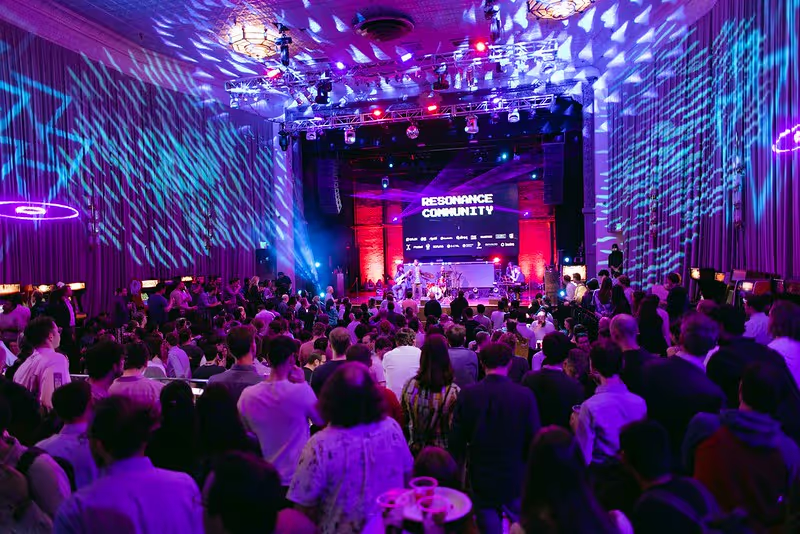
3D Booth: The first-ever digital qubit experience
During APS 2024, we had an industry first with a running quantum computer on the conference floor! This year we had another first for the industry - the Qblox's Virtual 3D Booth! We knew some couldn't make it in person, but we didn't want anyone to miss out on the excitement. So, we created a digital experience to show how we're building the quantum future, and we wanted everyone to be a part of it.
Virtually all visitors could dive into demonstrations showcasing setups for three different types of qubits. From superconducting qubits to spin qubits and optically addressable qubits, and even a virtual version of Qpong, attendees could experience Qblox in a fully interactive 3D environment. It was a unique way to engage with our technology and see firsthand what we're working on.
Take the next step in your quantum journey with Qblox!
We'd love to learn more about your quantum research, so we can demonstrate how Qblox provides control electronics solutions tailored to help you achieve your research goals.
Schedule a call directly with our experts by clicking here.
Let's unlock the potential of quantum together!



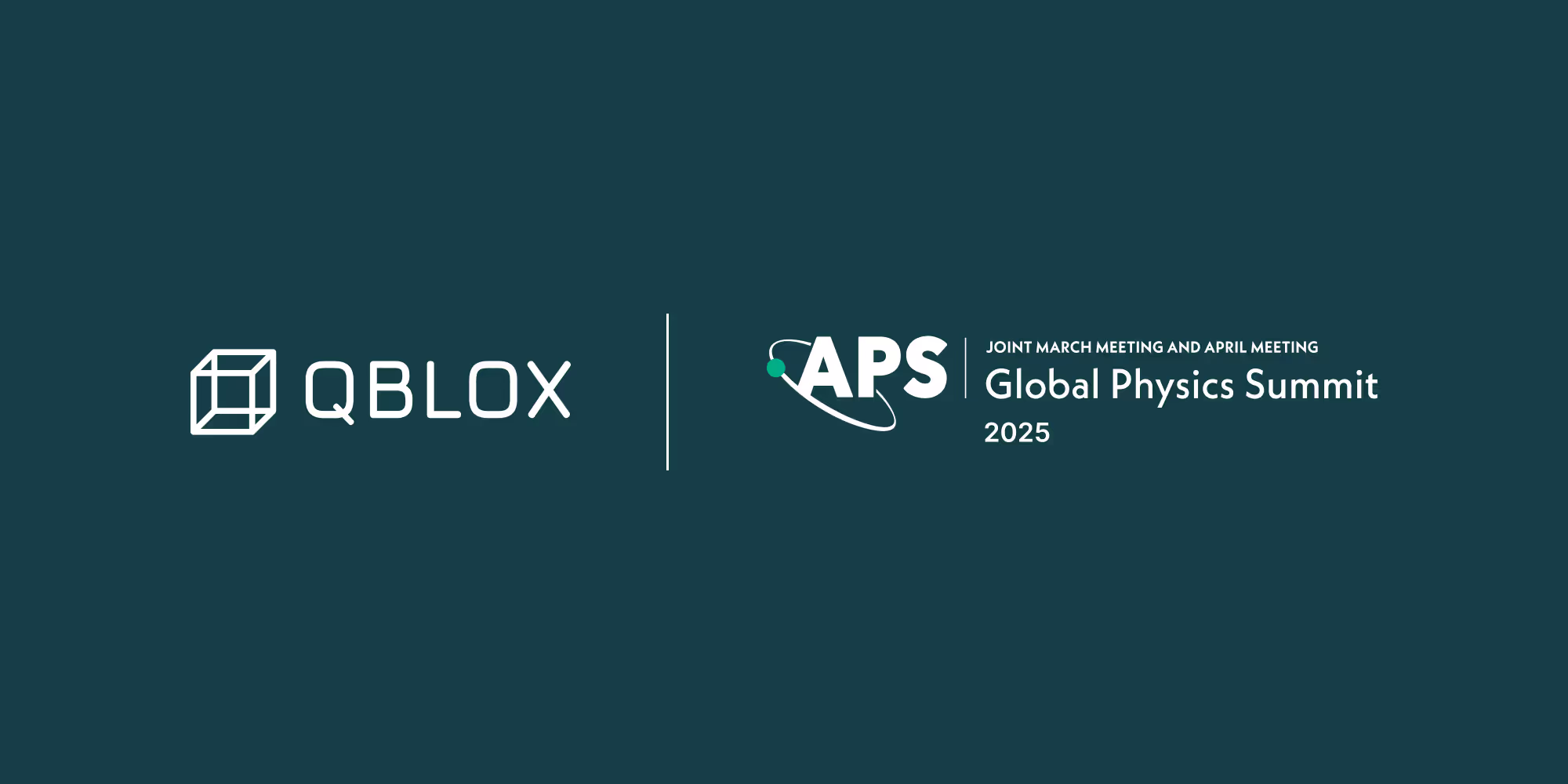
.svg)

